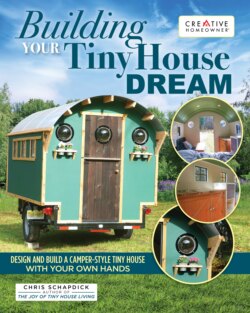Читать книгу Knitbook: The Basics & Beyond - Chris Schapdick - Страница 18
Safety Equipment
ОглавлениеNothing worth building is worth injuring yourself for. Since this is a hands-on building book, I am going to emphasize safety again and again. Your eyes, ears, and fingers are all susceptible to damage, as well as the rest of your body. It’s more than just a good idea to do what you can to protect them. Although protection is no guarantee that you won’t get hurt, it does reduce risk tremendously.
Safety goggles or glasses and gloves are great to just get used to wearing when you are working. Even something as simple as a splinter can have a negative impact on your work. This is especially true if you are dealing with pressure-treated lumber (the chemicals in the wood lead to a very painful reaction). Hearing protection in the form of earmuffs or earplugs is a good idea when you are using tools like an impact driver, router, table saw, or miter saw. They are pretty loud, and over time they will negatively impact your hearing. Working with these tools and going to lots of rock concerts in the 1980s have done their part to contribute to some hearing loss for me. It’s pretty easily avoidable, though, so either do something to protect your hearing or get used to having that steady, high-pitched ringing in your ears forever, like I do. You can pick up these three items (safety goggles, gloves, and hearing protection) for about $75 total.
There are also certain parts of the build that are particularly dusty, so it’s not a bad idea to have some sort of filtration safety mask for those times. Depending on how susceptible you are to the effects of dust inhalation, you may want to consider investing more or less in this. You can go super cheap with simple, disposable masks for a couple bucks a pop, or more expensive and effective valved filtration masks that cost $20 to $40. If you find that wearing the mask all the time is too restrictive, don’t worry about leaving it off—you’ll know when you are creating lots of dust, so just wear it during those times. And, of course, always use it if working with fiberglass, other forms of insulation, or certain chemical substances.
Gloves, goggles, and earmuffs: the trifecta of protection. Not pictured: a dust mask to protect your lungs.
